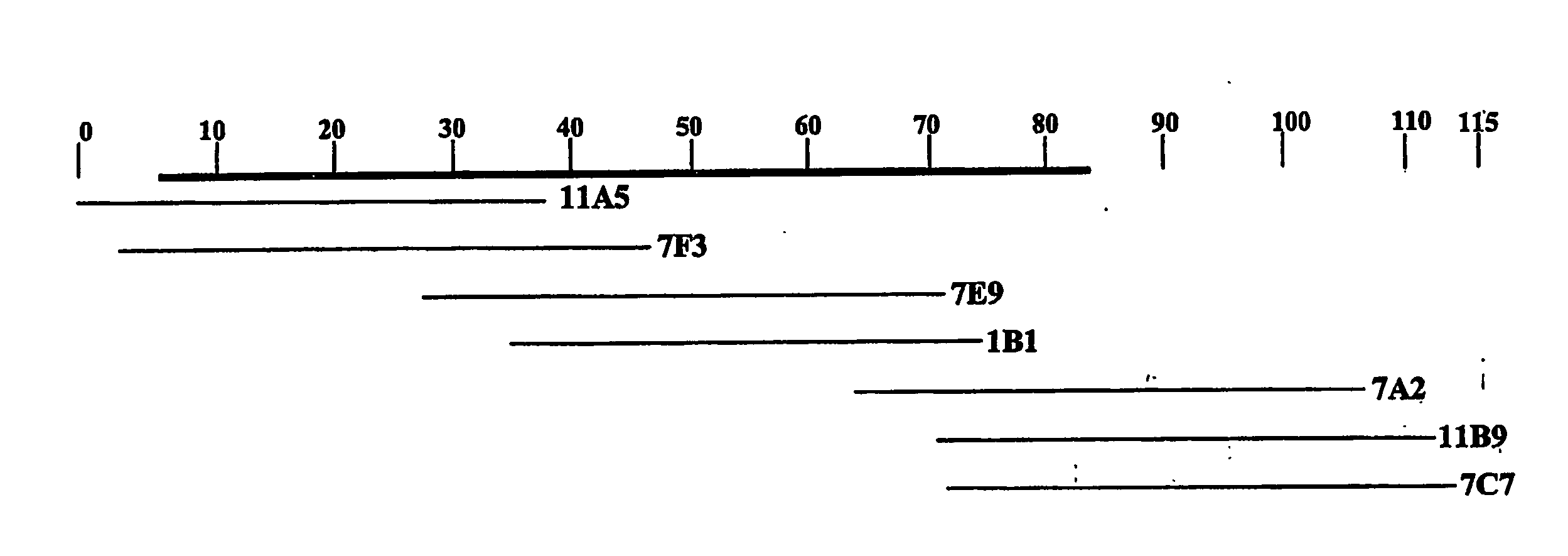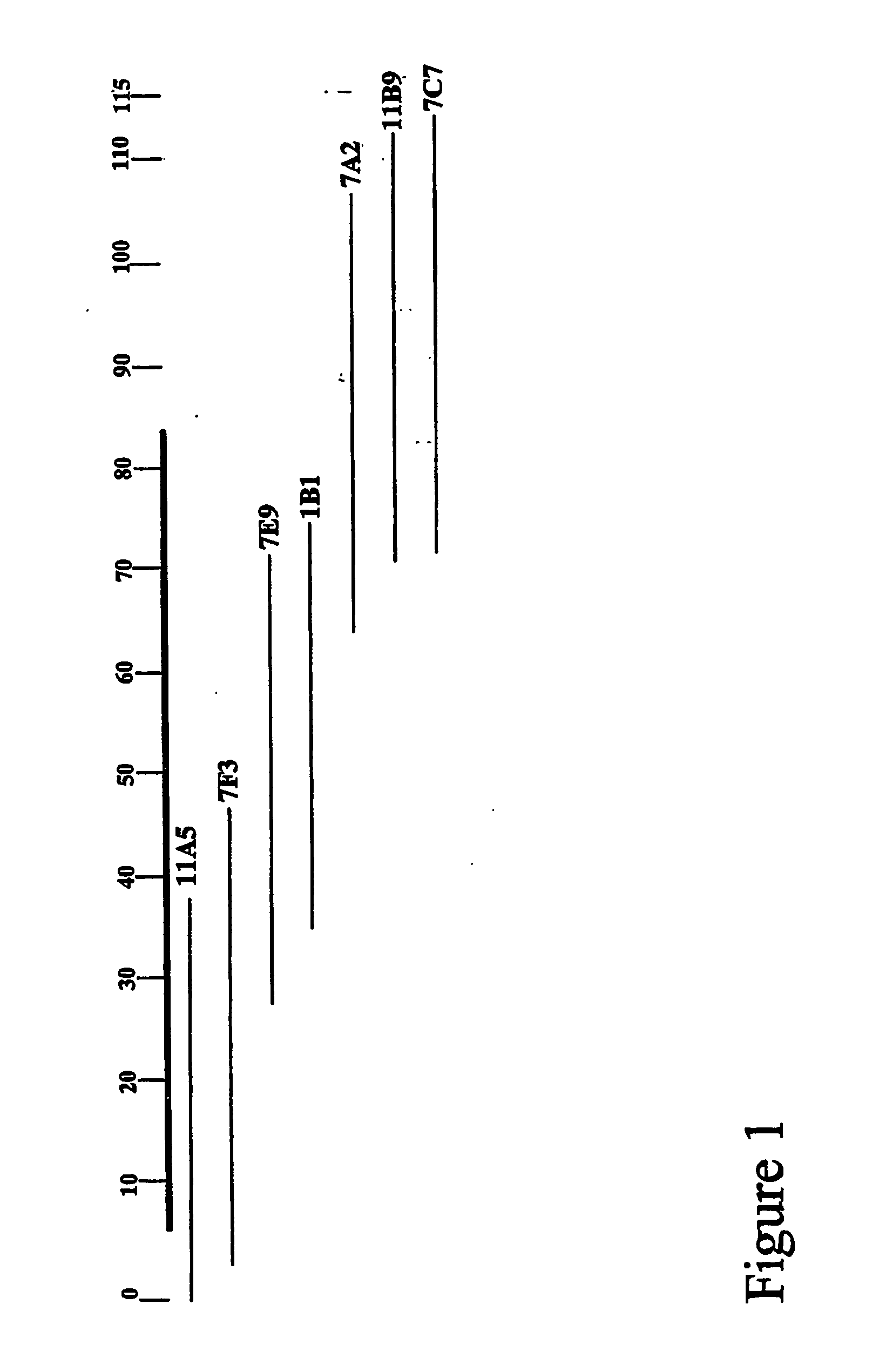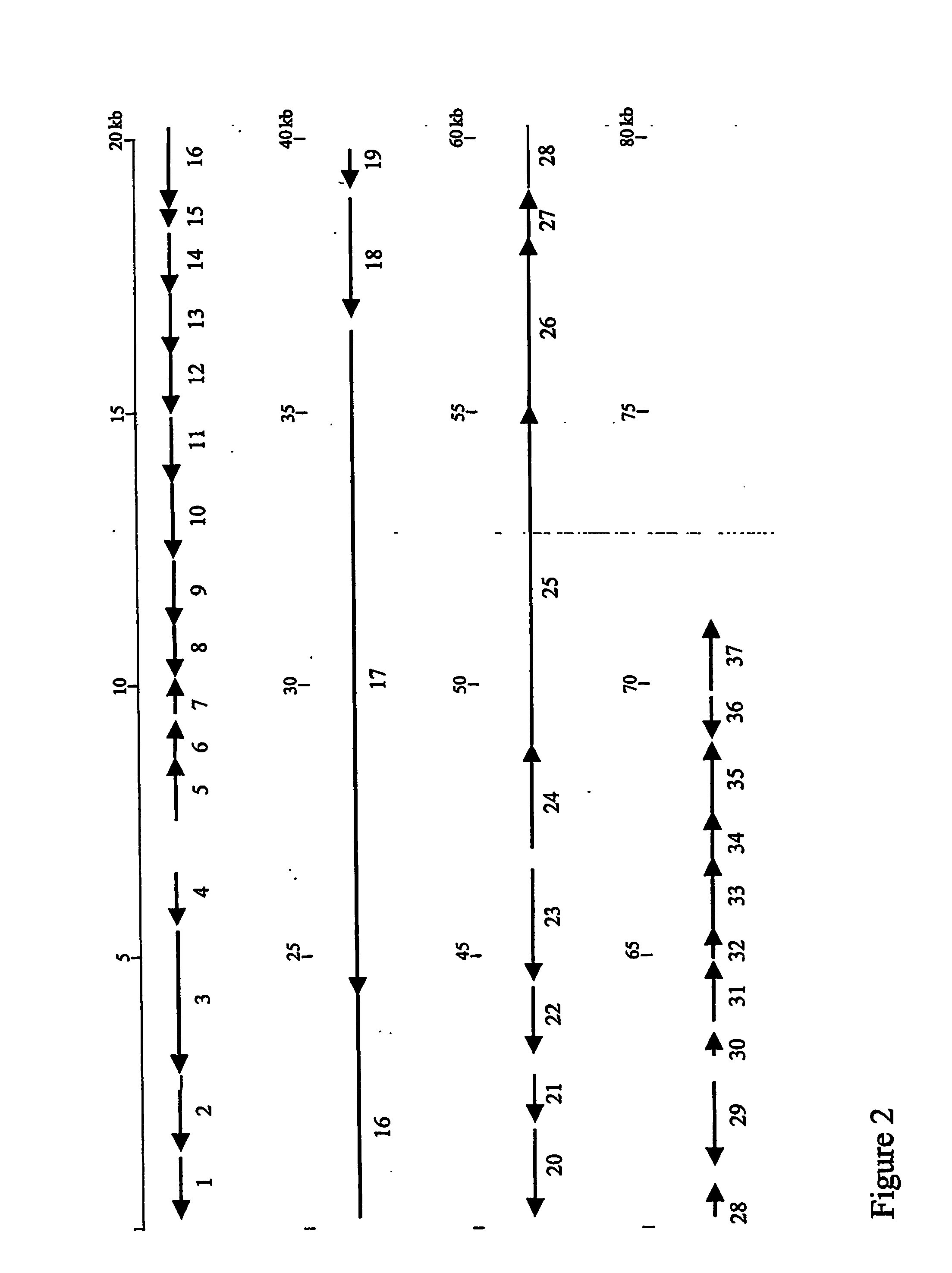Genes and Proteins For the Biosynthesis of the Glycopeptide Antibiotic A40926
a glycopeptide antibiotic and glycopeptide technology, applied in the field of genes and proteins for the biosynthesis of the glycopeptide antibiotic a40926, can solve the problems of complex identification of a desired cluster within a producer strain, inability to know a priori the organization, nucleotide sequence, or the extent of the identity of a new cluster as compared to those already known
- Summary
- Abstract
- Description
- Claims
- Application Information
AI Technical Summary
Benefits of technology
Problems solved by technology
Method used
Image
Examples
example 1
Isolation of A40926 Biosynthesis Genes
[0075]A genomic library is made with DNA from Nonomuria ATCC39727 in the cosmid vector Supercos (Stratagene, La Jolla, Calif. 92037). Total DNA from Nonomuria ATCC39727 was partially digested with Sau3AI in order to optimize fragment sizes in the 40 kb range. The partially digested DNA was treated with alkaline phosphatase and ligated to Supercos previously digested with BamHI. The ligation mixture was packaged in vitro and used to transfect E. coli XL1Blue cells. The resulting cosmid library was screened by hybridization with two probes obtained from PCR amplification of segments from the bal cluster using A. mediterranei DSM 5908 genomic DNA as template. These probes were: bgtfA, obtained from amplification with oligos 5′-ATGCGCGTGTTGATCTCG-3′ (SEQ ID NO: 39) and 5′-CGGCTGACCGCGGCGAAC-3′ (SEQ ID NO: 40); and dpgA, obtained from amplification with oligos 5′-CGTGGGGGTG GATGTATCGA-3′ (SEQ ID NO: 41) and 5′-TCACCATTGGATCAGCG-3′ (SEQ ID NO: 42). Al...
example 2
Sequence Analysis of A40926 Gene Cluster
[0077]The dbv cluster, identified as described under Example 1, was sequenced by the shotgun approach. The sequence of the dbv cluster is provided herein as SEQ ID NO: 1. The resulting DNA sequence was analyzed with Codonpreference [GCG, (Genetic Computer group, Madison, Wis. 53711) version 9.1] to identify likely coding sequences. Next, each coding sequence identified in this way was analyzed by comparison against the bal, cep, com and sta clusters using the program Tfasta (GCG, version 9.1). Coding sequences not identifying matches in any of these clusters were then searched against GenBank, employing the programs Blast, or against SwissProt, using Fasta. Finally, the exact start codon for each ORF was established by multiple alignment of related sequences with the program Pileup (GCG, version 9.1) or by searching for an upstream ribosomal binding site. In total, 37 ORFs, denominated dbvORF1 through dbv ORF37, are identified. The results of ...
example 3
Isolation of the dbv Cluster in an ESAC Vector
[0098]Using the information provided in Example 2, the dbv cluster was isolated in an ESAC vector as follows. A genomic library was made with DNA from Nonomuria ATCC39727 in the pPAC-S1 vector (Sosib et al. 2000b). DNA from Nonomuria ATCC39727 was prepared embedded in agarose plugs as described (Sosio et al. 2000b; WO99 / 67374), and partially digested with Sau3AI, in order to optimize fragment sizes in the 100-200 kb range. The resulting DNA fragments were briefly run on a PFGE gel, recovered and released from the agarose gel as described (Sosio et al. 2000b; WO99 / 67374). The resulting steps, including vector preparation, ligation and electroporation of E. coli DH10B competent cells, were performed as described (Sosio et al. 2000b; WO99 / 67374). The resulting colonies were arrayed onto nylon filters and screened by hybridization with two probes, PCR-amplified from Nonomuria ATCC39727 genomic DNA. Probe A was obtained using oligos 5′-TCAGGA...
PUM
| Property | Measurement | Unit |
|---|---|---|
| Fraction | aaaaa | aaaaa |
| Fraction | aaaaa | aaaaa |
| Fraction | aaaaa | aaaaa |
Abstract
Description
Claims
Application Information
 Login to View More
Login to View More - R&D
- Intellectual Property
- Life Sciences
- Materials
- Tech Scout
- Unparalleled Data Quality
- Higher Quality Content
- 60% Fewer Hallucinations
Browse by: Latest US Patents, China's latest patents, Technical Efficacy Thesaurus, Application Domain, Technology Topic, Popular Technical Reports.
© 2025 PatSnap. All rights reserved.Legal|Privacy policy|Modern Slavery Act Transparency Statement|Sitemap|About US| Contact US: help@patsnap.com



